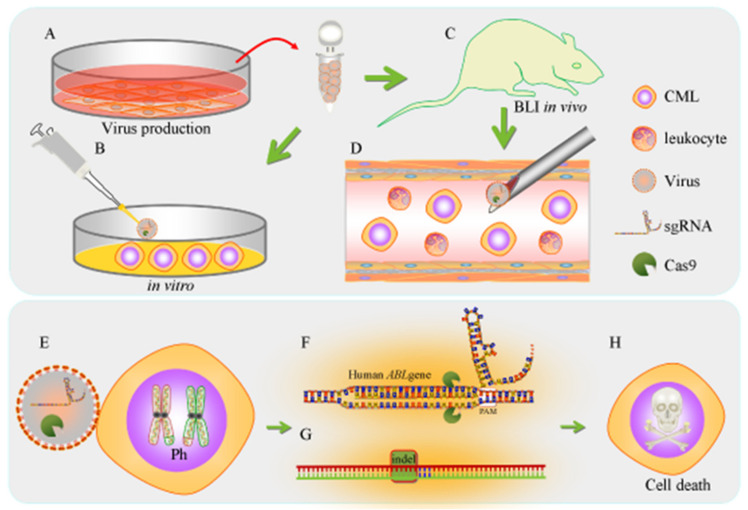Figure 9.
Schematic representation of the research strategy in this study. (A) Phoenix cells were used as the host to generate the lentiCRISPR plasmid-based ABL gene-edited virus. The collected lentivirus was purified, concentrated and quantitated by qPCR analysis. The high-quality lentivirus was used (B) in vitro and (C) in in vivo bioluminescence imaging-based animal models. (D) We injected lentivirus targeting bioluminescent human CML cells via the tail vein into the systemic leukemia xenograft mouse model. The leukemia cells were detected by IVIS. (E) Once the ABL gene knockout virus attacks the Ph chromosome in K562 cells, (F) the virus will generate sgRNA targeting the human ABL gene locus, and Cas9 will cleave the DNA. (G) The competing NHEJ pathway for DNA repair frequently creates indels. (H) CML cells eventually die due to the production of nonsense ABL sequences or early termination of the protein due to a frameshift.

